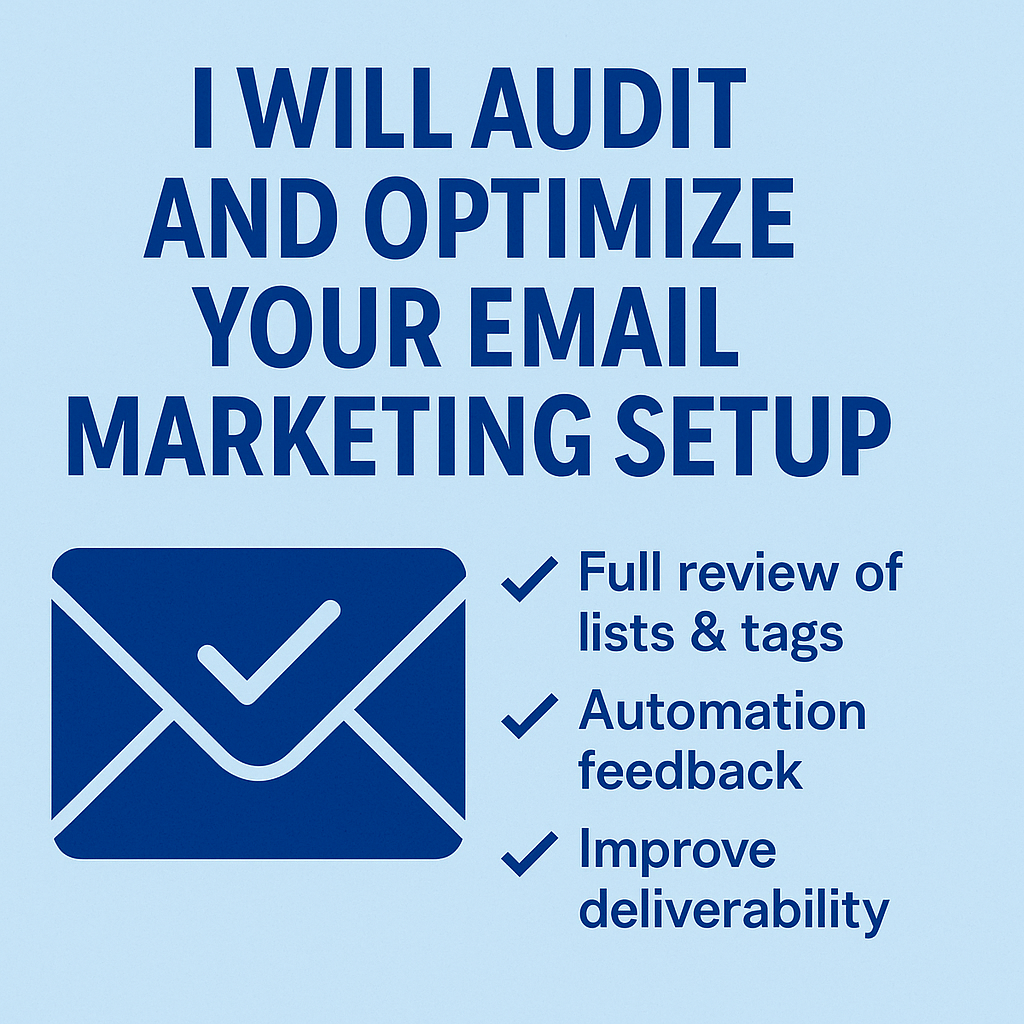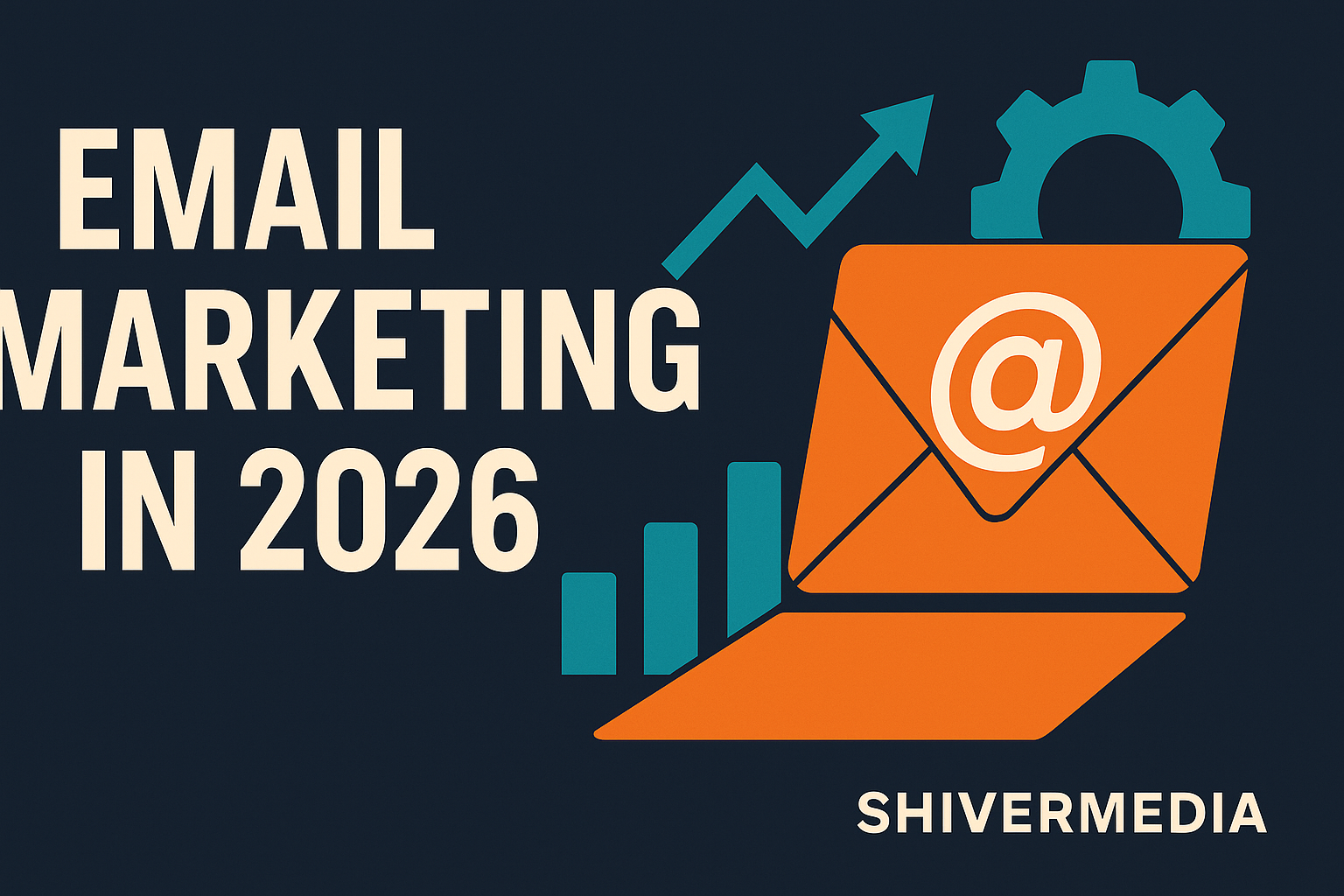Why Email Marketing Is Still the King of Conversions Heading into 2026
Every couple of years, someone comes along to declare email is dead. The headlines pop up like clockwork: “Email is Over,” “No One Reads Emails Anymore,” or “Social Media Has Replaced Email.”
But here we are, stepping into 2026, and email is still the number one conversion tool in digital marketing. In fact, it’s stronger than ever.
The truth is, email isn’t going anywhere. People may scroll past ads, algorithms may hide your posts, SEO may take months to gain traction — but email lands directly in the inbox. It’s personal, measurable, and built to drive action. For businesses serious about generating leads and conversions, email remains the backbone of a strong digital strategy.
At ShiverMedia, we’ve been in the email game for over 20 years. We’ve run campaigns for dating apps, fitness brands, travel companies, and entertainment projects. We’ve seen the shift from basic text newsletters to hyper-personalized, AI-powered, data-driven campaigns. And after two decades, we can say this with confidence: email is not dead — it’s the best tool you have for conversions in 2026.
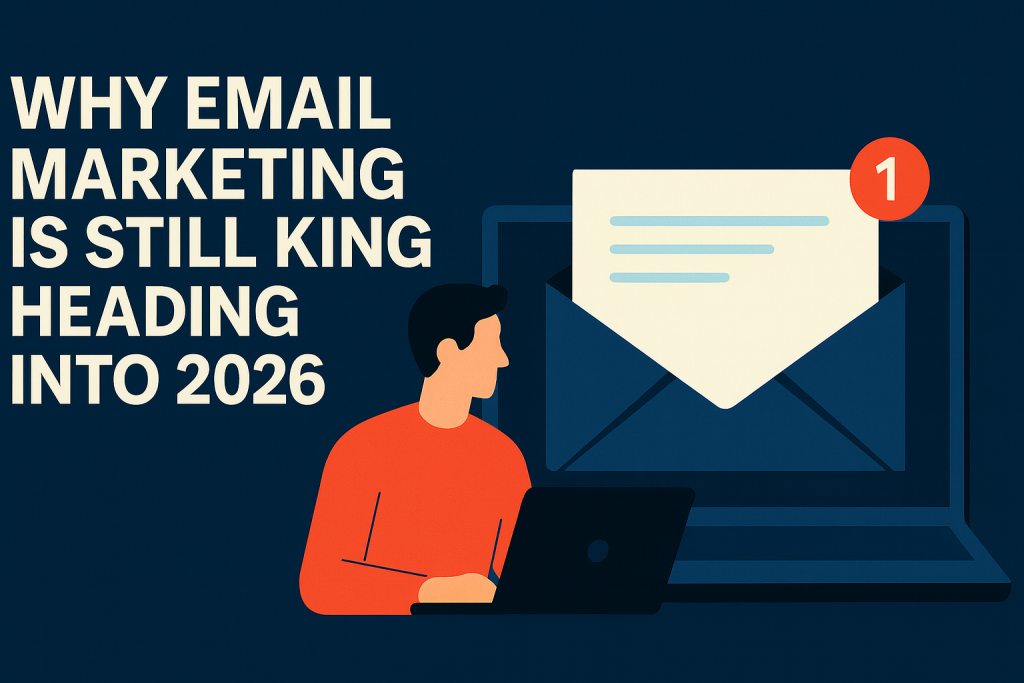
Why People Still Think Email Is Dead
So why do people keep writing obituaries for email marketing?
- Shiny New Toys Every new platform — from TikTok to Threads to whatever comes next — creates the illusion that older channels are irrelevant. But trends come and go. Email stays.
- Overcrowded Inboxes Yes, people get a lot of email. But they still read the ones that matter. The average professional checks their email around 15 times a day.
- Poor Campaigns Marketers who blast irrelevant, spammy content see weak results and assume email doesn’t work. The truth is, bad email doesn’t work. Good email still crushes it.
- Spam Confusion Many people confuse spam with real marketing. Spam is junk. Real email marketing is permission-based, relevant, and adds value.
When you look at the actual numbers, email tells a different story. The industry average ROI continues to sit around $36 for every $1 spent. Social media ad costs are rising, SEO takes months to generate returns, but email delivers results you can measure instantly.
True Email vs. Spam: The Big Difference
It’s worth underlining this point: true email marketing is not spam.
- True Email Marketing is personalized, relevant, and permission-based. People opt in because they want your content. The emails are tailored to their interests, behaviors, or past purchases. They respect boundaries and create trust.
- Spam is generic, intrusive, and often sent without consent. It’s the digital equivalent of junk mail. It doesn’t care who’s on the other end.
We’ve seen this difference play out in real campaigns.
For a dating app client, instead of blasting the same message to everyone, we created behavior-based triggers. If someone hadn’t logged in for two weeks, they got a gentle nudge. If someone had just joined, they got a welcome sequence guiding them through features. The results? Engagement rates soared. Spam doesn’t do that. Real email marketing does.
Why Email Outperforms Social and SEO
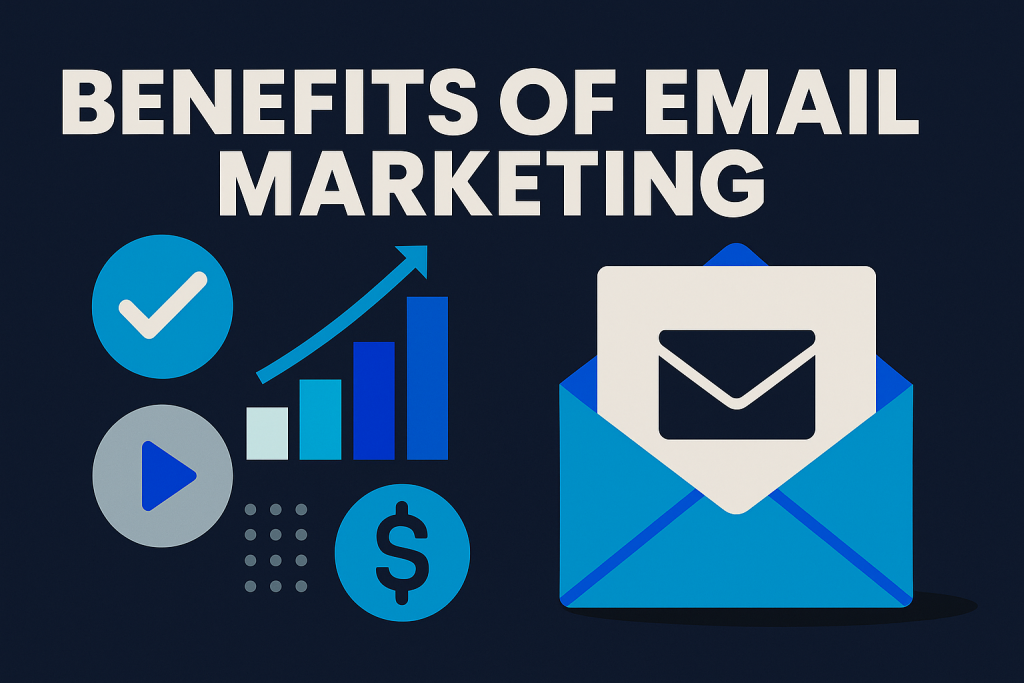
Social media and SEO have their place, but when it comes to conversions, email leaves them behind.
Direct Access
On social, algorithms decide who sees your content. On search, you’re fighting for visibility against millions of results. Email goes straight to the inbox. If they opted in, you’re in.
Built for Action
People scroll social feeds for entertainment. They use Google to research. But when they open their inbox, they’re primed for action. Email is designed for CTAs — click, buy, register, download.
ROI That Beats Everything Else
$36 for every $1 spent. No other channel consistently comes close.
Data You Can Use
Email marketing provides granular insights: open rates, click-throughs, conversions, even heat maps showing what parts of your message get attention. Social and SEO can’t compete with that level of clarity.
Ownership
You don’t own your social followers. The platform does. Your SEO rankings can vanish with the next Google update. Your email list? That’s yours. It’s an asset no one can take away.
ESPs Powering Email Marketing in 2026
The tools available today are smarter and more powerful than ever. They’re no longer just about sending newsletters. They’re about creating automated, personalized, AI-driven experiences. Here’s a look at the ESPs shaping 2026:
MailerLite
Affordable, intuitive, and powerful. MailerLite has become a go-to for small businesses, creators, and startups. It offers easy drag-and-drop design, strong automation, and solid deliverability at a fraction of the cost of some bigger platforms. For businesses just starting out — or those who want clean, no-frills power — MailerLite is a serious contender.
Klaviyo
The gold standard for e-commerce. Its predictive analytics and Shopify integration make it a powerhouse for online stores. Perfect if you need to send abandoned cart reminders, product recommendations, or seasonal promos.
Mailchimp
Still a major player, especially for small to midsize businesses. Easy-to-use templates, AI-assisted tools, and solid automation workflows.
HubSpot
For businesses that need CRM + email in one ecosystem, HubSpot delivers. Its ability to tie marketing, sales, and service together makes it ideal for complex buyer journeys.
ActiveCampaign
Great for service-based businesses or B2B brands that need robust automation and CRM features. Excellent for long, relationship-driven funnels.
Litmus & Stripo
Design and testing tools that ensure your emails look good everywhere. With more users opening on mobile and dark mode, testing is critical.
Phrasee & AI Tools
AI tools like Phrasee are rewriting subject lines and optimizing content tone to boost engagement. As AI evolves, expect ESPs to roll these features directly into their platforms.
How to Choose the Right ESP
Not every ESP is a fit for every business. Ask yourself:
- Can it scale with your list growth?
- Does it support the workflows you need (abandoned cart, re-engagement, onboarding)?
- Does it integrate with your e-commerce platform, CRM, or booking system?
- Are analytics strong enough to prove ROI?
- Does it support compliance (GDPR, CCPA, CASL)?
At ShiverMedia, we’ve guided clients through these choices. For fitness brands, automation and scheduling are top priorities. For travel companies, segmentation rules the day. For startups, affordability and ease of use matter most. The “best” ESP is the one that supports your business model and growth stage.
ShiverMedia’s 20-Year Email Journey
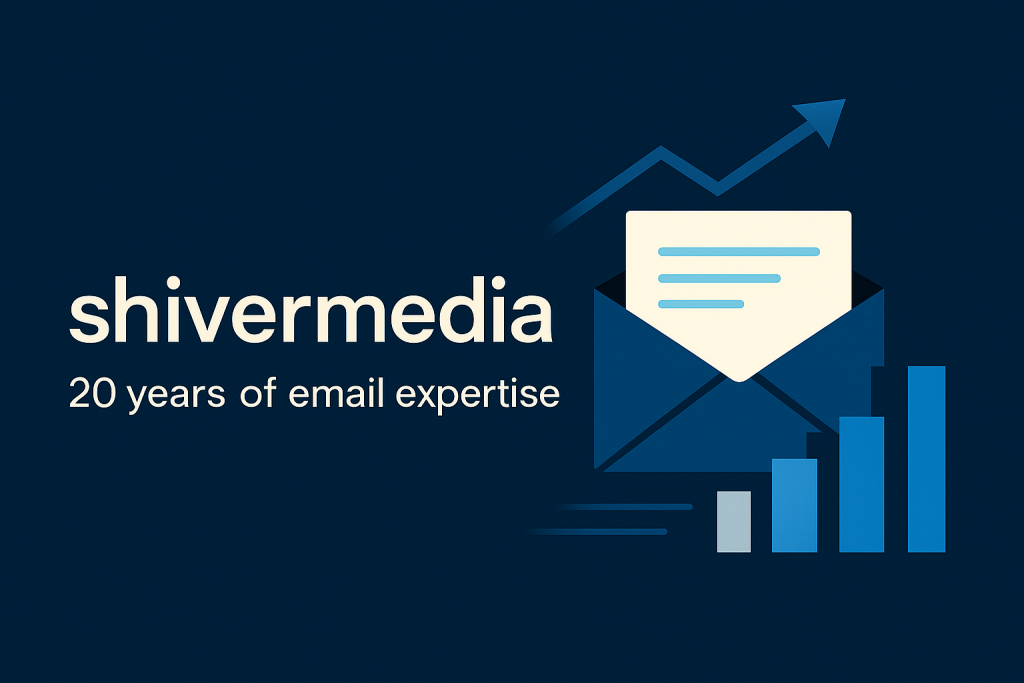
We’ve been at this since the early 2000s, when email meant clunky HTML and mass newsletters. Back then, personalization meant adding “Hi [First Name].”
Fast-forward 20 years, and the landscape is unrecognizable. Automation, segmentation, AI-driven content, and predictive analytics have changed the game.
- Dating Apps: We built onboarding flows, re-engagement campaigns, and premium upsell funnels. These improved retention and boosted subscriptions.
- Travel Companies: We segmented audiences into families, couples, and adventure travelers. Bookings rose by 30% in three months.
- Fitness Brands: We automated reminders, motivational content, and upsell offers. Churn dropped, memberships grew.
- Entertainment Projects: From event reminders to episodic promos, emails consistently drove ticket sales and engagement.
The lesson? No matter the industry, email delivers when you respect the audience and build a strategy that serves them.
Best Practices for Email in 2026
1. Segmentation Is Essential
Generic blasts don’t work. Group your audience by interest, behavior, or stage in the funnel.
2. Smarter Automation
From welcome series to re-engagement flows, automation saves time and nurtures leads around the clock.
3. Mobile-First Design
Over 60% of emails are opened on mobile. If it doesn’t look good on a phone, it doesn’t work.
4. Privacy and Compliance
With GDPR, CCPA, and likely new regulations ahead, compliance isn’t optional. Always get opt-in consent and make unsubscribing easy.
5. Testing and Optimization
Subject lines, send times, layouts — test everything. Even small improvements stack into major ROI.
6. Value Over Volume
Don’t send more emails. Send better ones. Each email should have a reason to exist and deliver value.
Case Studies by Industry
Travel
A boutique travel company segmented customers by type of traveler. Families got different content than solo adventurers. The result? Open rates up 40%, conversions up 30%.
Dating Apps
Behavioral triggers sent nudges to inactive users, improving retention by 25%.
Fitness
Automated reminders and motivational content reduced churn by 15% and increased premium upgrades.
Trends Defining 2026
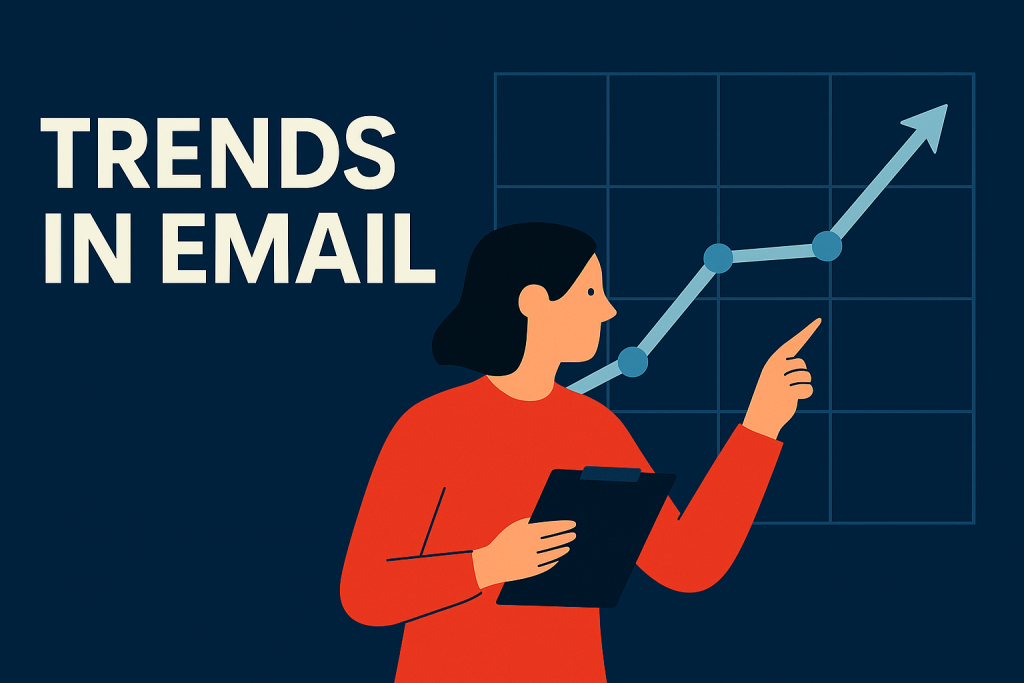
- AI Personalization – Real-time, hyper-personalized recommendations.
- Interactive Emails – Carousels, surveys, and even purchases without leaving the inbox.
- Dark Mode Design – Essential as more users adopt it.
- Sustainability Messaging – Consumers expect eco-conscious communication.
- Compliance First – Stricter privacy laws are coming. Transparency and trust will separate winners from losers.
Why Email Still Matters
At the end of the day, email isn’t just about sending promotions. It’s about building relationships, creating conversations, and driving measurable results.
We’ve seen email evolve for 20 years at ShiverMedia. The platforms, tools, and designs may change, but the fundamentals remain the same: email works.
Heading into 2026, the brands that succeed will be those who treat email as more than a broadcast tool. It’s a conversation starter, a trust-builder, and still the most reliable way to turn prospects into customers.
The inbox is where conversions happen. And in 2026, it still matters more than ever.
If you want to get an email audit to see how your email marketing stacks up to your competitors and best practices, email us.
